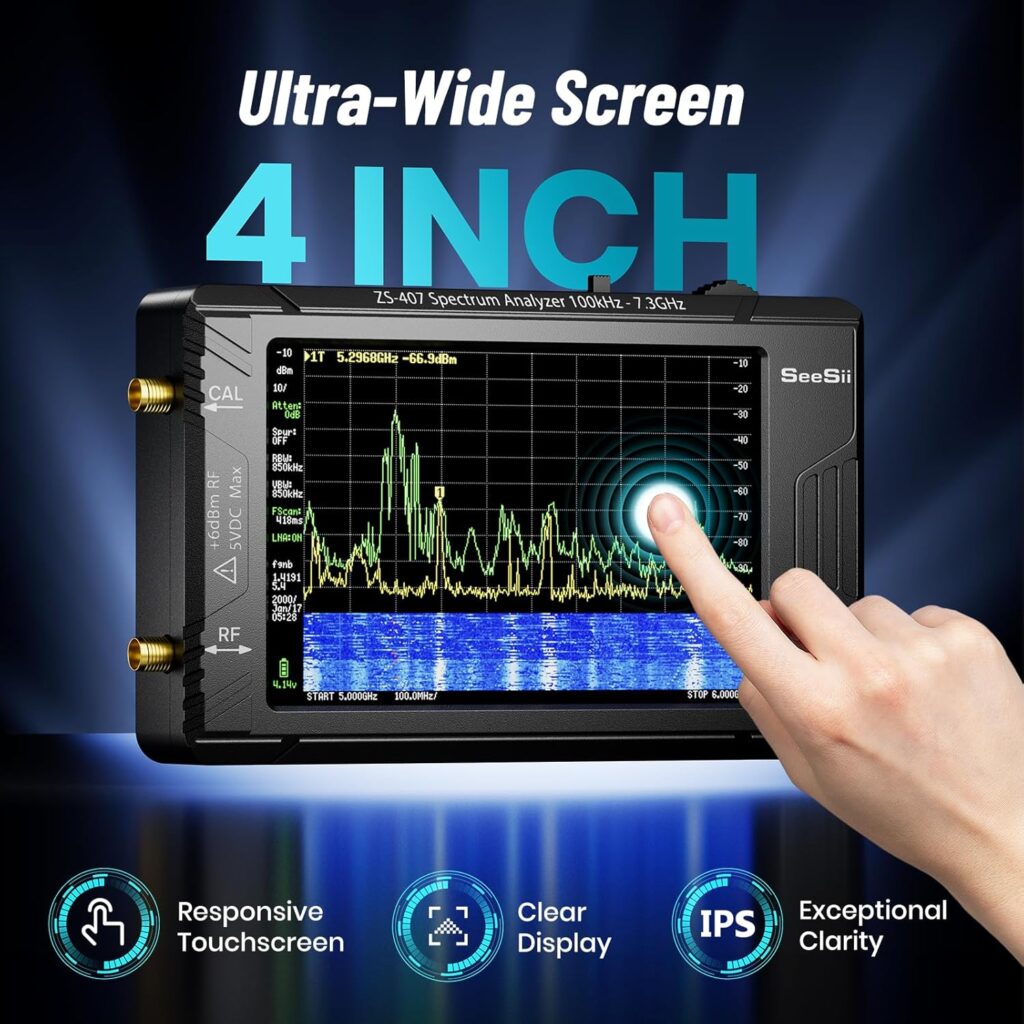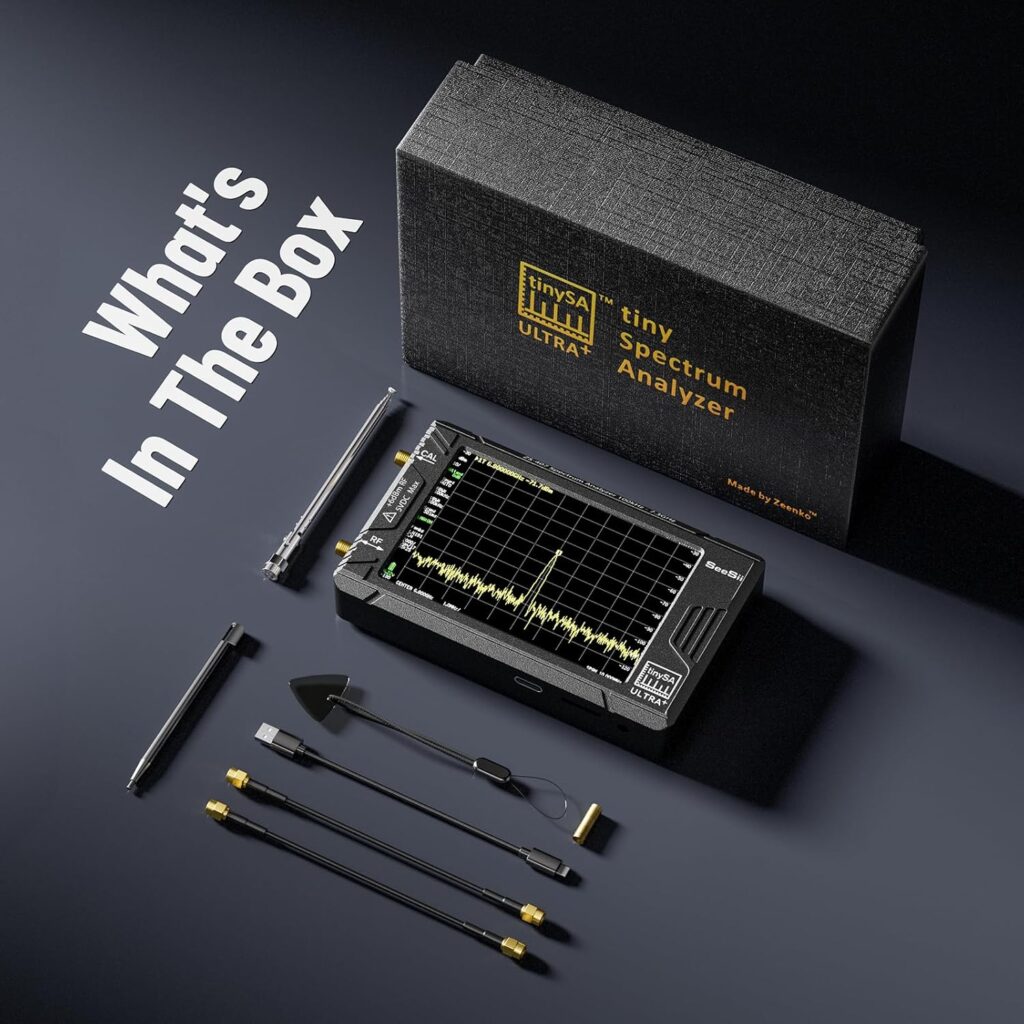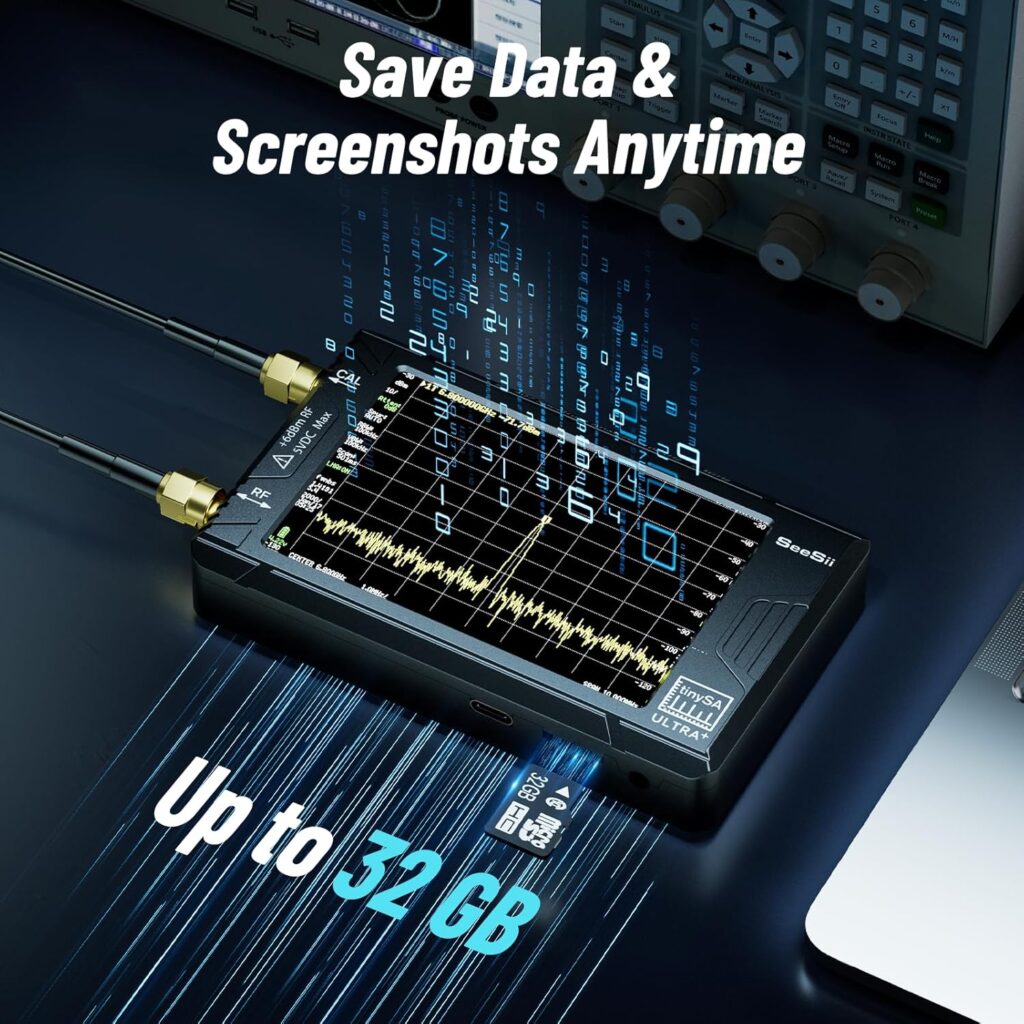When exploring low-cost RF tools, two names often appear together – TinySA and RTL-SDR. Both are compact, affordable, and incredibly useful for anyone working with radio signals, but they serve very different purposes.
🏷️ TinySA Ultra on Amazon ⭐⭐⭐⭐
Whether you’re analyzing signals, building antennas, or diagnosing interference, understanding the difference between these two devices will help you pick the right one for your setup.
⚡ Overview
- TinySA (Tiny Spectrum Analyzer) is a stand-alone spectrum analyzer with a built-in display. It scans and visualizes signal strength across frequency, much like professional analyzers used in RF labs.
- RTL-SDR (Software Defined Radio) is a USB-based receiver that turns your computer into a radio. It captures raw RF data for real-time demodulation and signal decoding through software.
In simple terms:
👉 TinySA measures RF power and spectrum activity.
👉 RTL-SDR receives and decodes actual signals.
⚙️ Specification Comparison
| Feature | TinySA | RTL-SDR |
|---|---|---|
| Function | Spectrum Analyzer | Software Defined Radio Receiver |
| Frequency Range | 100 kHz – 960 MHz (TinySA Basic) Up to 7 GHz (TinySA Ultra) | ~24 MHz – 1.7 GHz (varies by model) |
| Measurement Type | Power vs Frequency (spectrum view) | I/Q sampling and signal decoding |
| Dynamic Range | ~80 dB (TinySA Ultra) | ~50 – 60 dB typical |
| Signal Generator | Yes (tracking generator for filter tests) | No (receive-only, unless paired with TX hardware) |
| Display | Built-in 4.0–4.3″ touchscreen | Requires PC, tablet, or smartphone |
| Software | TinySA-App, SigDigger, GQRX | SDR#, CubicSDR, GQRX, HDSDR, SDR-Console |
| Host Requirements | Stand-alone (USB for power) | PC, Mac, or Raspberry Pi |
| 💳 Price Range (2025) | 💲 Check Price | 💲 Check Price |
| Best For | Spectrum scanning, filter and interference analysis | Listening, decoding, and monitoring signals |
| Power Supply | USB-C or micro-USB | USB 2.0/3.0 power from host device |
📡 TinySA: The Portable Spectrum Analyzer
The TinySA is designed for signal visualization and testing. It shows the strength of signals across frequencies – perfect for identifying interference, testing transmitters, and characterizing filters.
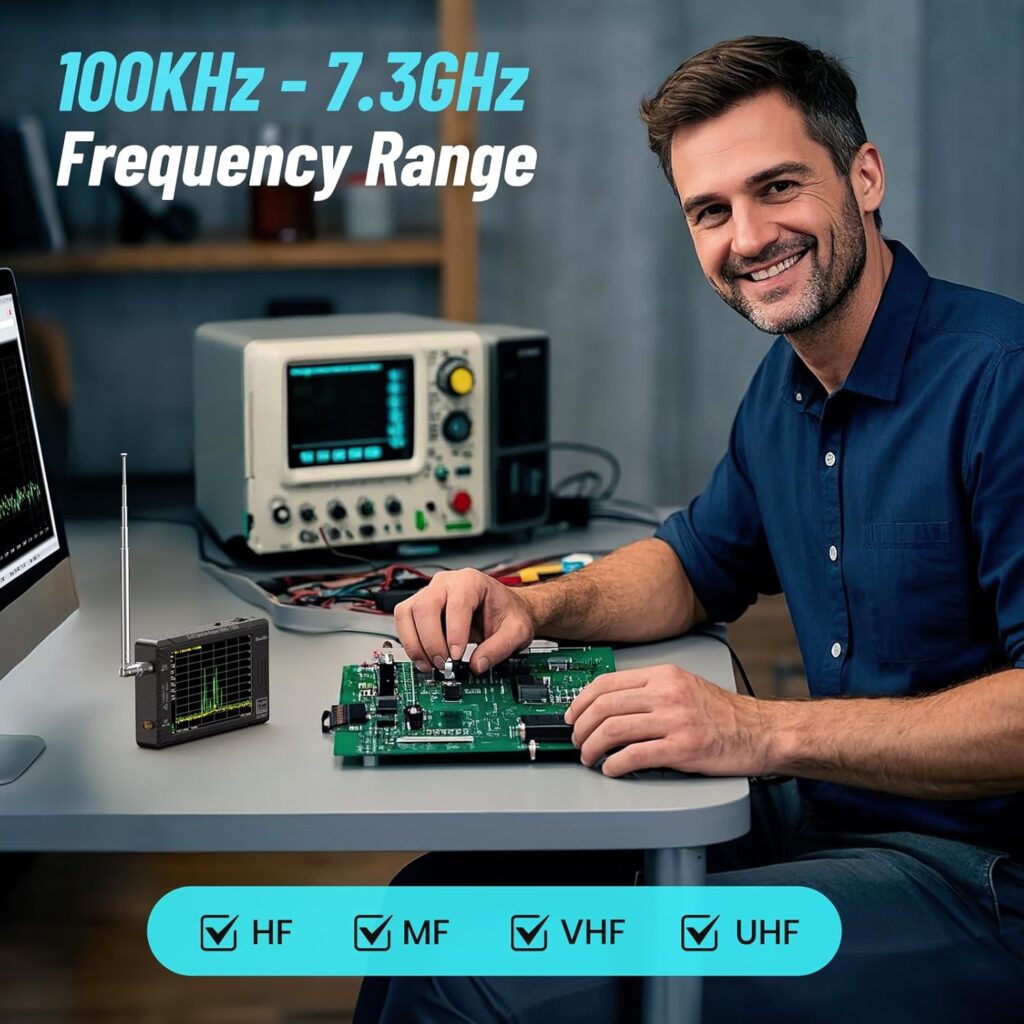
TinySA – 7.3 GHz Portable Spectrum Analyzer on Amazon
- ✅ Built-in tracking generator for measuring filter or amplifier response.
- ✅ Portable and battery-powered, making it ideal for fieldwork.
- ✅ Doesn’t need a computer – works stand-alone.
- ⚠️ It does not decode signals (you can’t listen to FM or view digital data).
TinySA gives you a picture of what’s happening in the spectrum, making it ideal for debugging and measuring signal environments.
🛰️ RTL-SDR: The Versatile Software Radio
The RTL-SDR dongle started as a TV tuner but evolved into one of the most versatile RF tools ever. Plug it into your computer, and you can receive signals from FM radio, aircraft (ADS-B), satellites, ham radio, and even weather balloons.
- ✅ Can decode digital modes (FT8, APRS, AIS, etc.).
- ✅ Works with powerful free software (SDR#, GQRX, SDR++).
- ✅ Incredibly wide community and project support.
- ⚠️ Needs a computer and can’t measure absolute power accurately.
RTL-SDR is essentially a universal radio receiver, while TinySA is a measurement instrument.
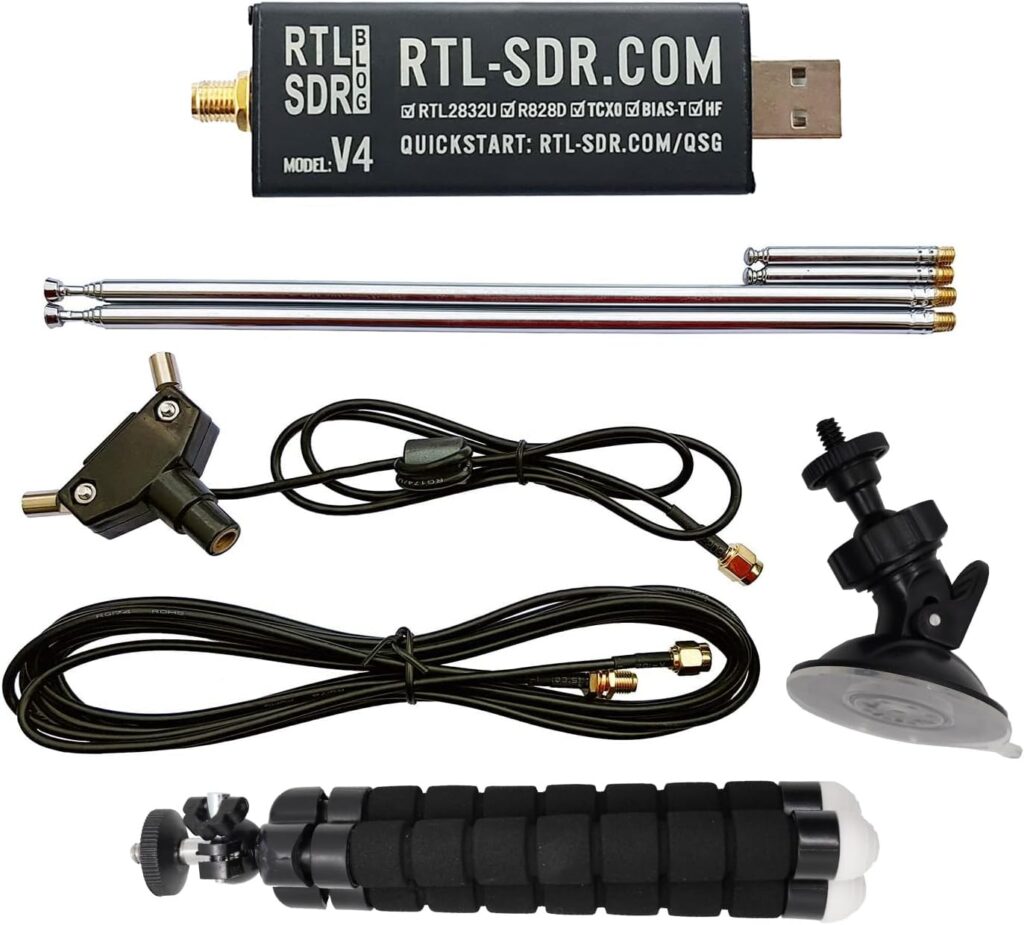
🌐 Practical Use Cases
| Application | TinySA | RTL-SDR |
|---|---|---|
| Checking transmitter output power | ✅ | ⚠️ Approximate only |
| Spectrum analysis and interference hunting | ✅ | ✅ (via software, less accurate) |
| FM/AM listening | ❌ | ✅ |
| Decoding digital signals (ADS-B, AIS, APRS) | ❌ | ✅ |
| Testing filters and amplifiers | ✅ (with tracking generator) | ❌ |
| Portable, stand-alone operation | ✅ | ❌ |
| Signal recording or demodulation | ❌ | ✅ |
🔧 Ideal Combination
Many RF hobbyists and engineers actually use both devices together.
- Use TinySA to measure what’s in the air and to characterize your circuits.
- Use RTL-SDR to dig deeper into what those signals contain.
Together, they form a low-cost, highly capable RF test setup that can rival gear costing hundreds or even thousands of dollars.
🧭 Final Thoughts
Both TinySA and RTL-SDR are outstanding tools – they just serve different purposes:
- TinySA is a measurement tool – precise, self-contained, and great for RF power and spectrum visualization.
- RTL-SDR is a receiver and decoder – perfect for listening, analyzing, and experimenting with real-world signals.
If you’re serious about learning RF, signal analysis, or antenna design, having both is a game-changer. The TinySA helps you see the spectrum; the RTL-SDR helps you understand it.

